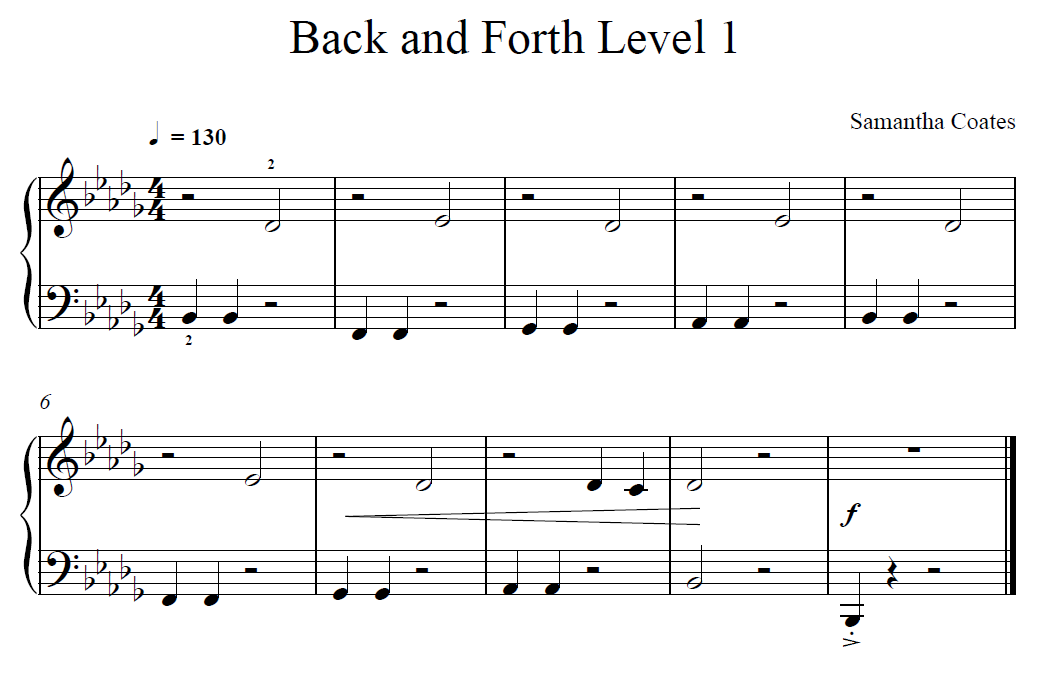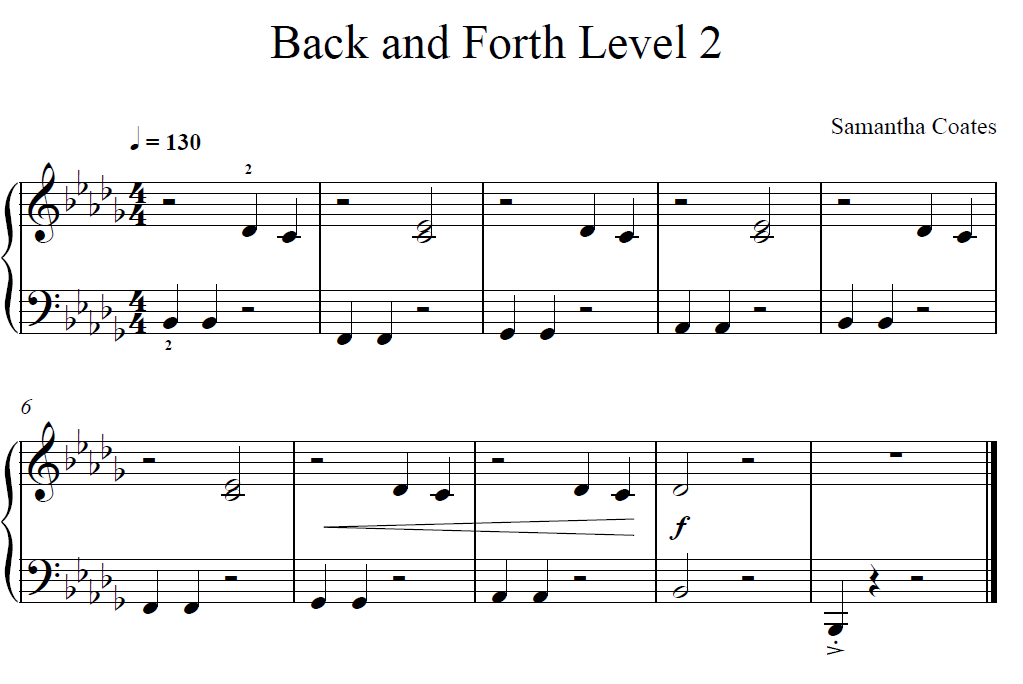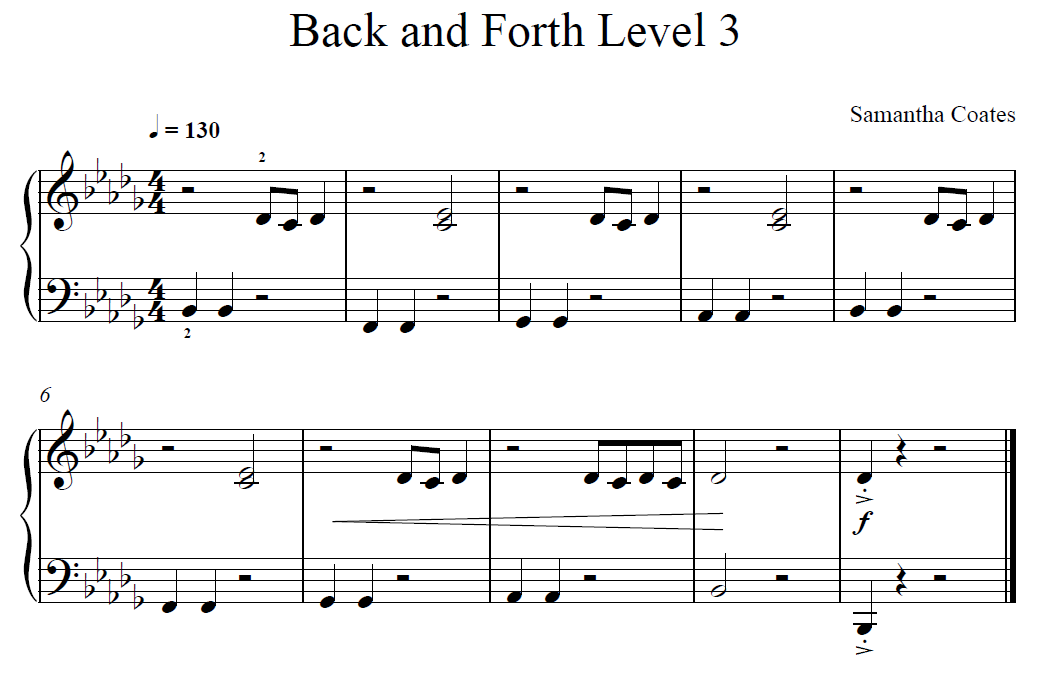
Well how’s that for a loaded question! Impossible to answer unless you’re about to write about it, which, luckily, I am. 😊
Obviously, rote teaching does work, given the large population of non-pianists who can play Chopsticks and Heart and Soul. So the real question is, does rote teaching work as a mode of genuine piano teaching?
If you had asked me this question before March 2017, I would have said a resounding NO WAY. Rote teaching does not work as a form of genuine teaching. My points would have been as follows:
- Rote teaching prevents reading
- *tries to think of another point*
So, no. 1 would have been my only point. There are MANY things we teach by rote when we give a piano lesson: technique, expression, posture. Students listen and copy to be able to do these things efficiently.
I was ‘raised’ to believe that rote teaching was bad, but that’s because we think of rote teaching as bypassing notation, and since I was only allowed to play pieces that I could read, this is subsequently how I taught (until recently!). I worried that if students are always relying on listening and copying the notes we play, they will never learn to read, interpret and eventually rely on getting their information from music notation.
But then, in March 2017 at the MTNA conference in Baltimore, I attended a fabulous session by Dr Julie Knerr and Katherine Fisher. I listened to them list all the reasons why rote teaching is so good, and it set me down a path of exploring and composing patterned pieces that combined rote and reading.
So since then, when someone asks me ‘Does Rote Teaching Work?’ my answer is:
Yes! Absolutely! And when it is combined with reading, it makes sight reading even better.
An Example
Here is a piece from my Rote Repertoire series, called Back and Forth. It is in a contemporary ‘rock’ style, which appeals to slightly older beginners. As you can see, it is in a comfortable B flat minor hand position, with longer fingers on black notes and thumb and 5th finger on white notes (all of the pieces are written in accordance with my experience of Taubman principles of piano technique).

It says ‘Level 1’ because I have written a whole series of pieces in three levels, which eventually get the student from rote to reading.
Level 1 needs to be taught by rote, because we would never expect students to read in this key in the early stages! There are many different ways to teach by rote – some teachers also employ ‘by ear’ imitation. However you choose to teach (and I will go through various ways in my upcoming webinar, see below for details!) there is always a risk that the student will forget how to play it once they get home (especially if they go on to soccer, gymnastics, ballet and swimming). So, I’ve created a whole channel of Level 1 reminder videos on YouTube, in case it’s a long time between the student’s lesson and when they go to practice!
Once the student can play Level 1 well, show them the score and say ‘this is what you just played!’. Encourage them to play again with the score, if possible.

Here’s where Rote Repertoire is unique, and goes beyond other types of rote pieces, by beginning to strengthen students’ reading skills. Show the student Level 2 and before they play anything, ask them to ‘spot the difference’ between the Level 1 and Level 2 scores. There is a slight variation in rhythm, and now the RH is playing more Cs, including a 2-note chord. Ask them how they think this will sound and try out the different parts, then play the whole piece.

Once Level 2 is fluent, show them the score for Level 3 and once again ‘spot the difference’, scanning thought the music before playing. They should notice that the LH remains the same but the RH has a rhythmic variation. Students could clap this before playing.
Once they’ve mastered all three Levels… I ask them to make up their own Level 4! This is the part of the repertoire series of which I am most proud and which I think is actually the most important. The way the pieces are presented encourages students to read but ALSO to create their own versions. They’ve just played three versions of the piece, so It’s a no brainer for them to make up their own Level 4. This is the essence of music – getting students to be creative!
This repertoire series is unique. It needs to be taught a special way – this is NOT repertoire that can be simply sent home with students, or taught in a traditional fashion. With this series, students can have it all: contemporary pieces that sound interesting, sight reading skills, a solid technique AND improvisation and composition opportunities.
I’m proud of my new project. I’ve been using it with EVERY SINGLE STUDENT. My younger students use it as their repertoire pieces, and my older students love it as quick-study pieces or sight-reading adventures. It has become my go-to lesson activity when students come to lessons unprepared. I think they are wondering what’s up with me, because now I seem so happy when they say they haven’t practised!
If you’d like to see Rote Repertoire in action, I’ll be running a free training this week. I’ll demonstrate how I teach it, show why it works so well, answer any questions you may have, and also give away some great freebies!
You can register for this awesome LIVE free training with the link below. No worries if can’t make it live – by registering you’ll get access to the replay.
DATE: Friday 16 July
TIME: 10am AEST
LOCATION: Online! (ZOOM)